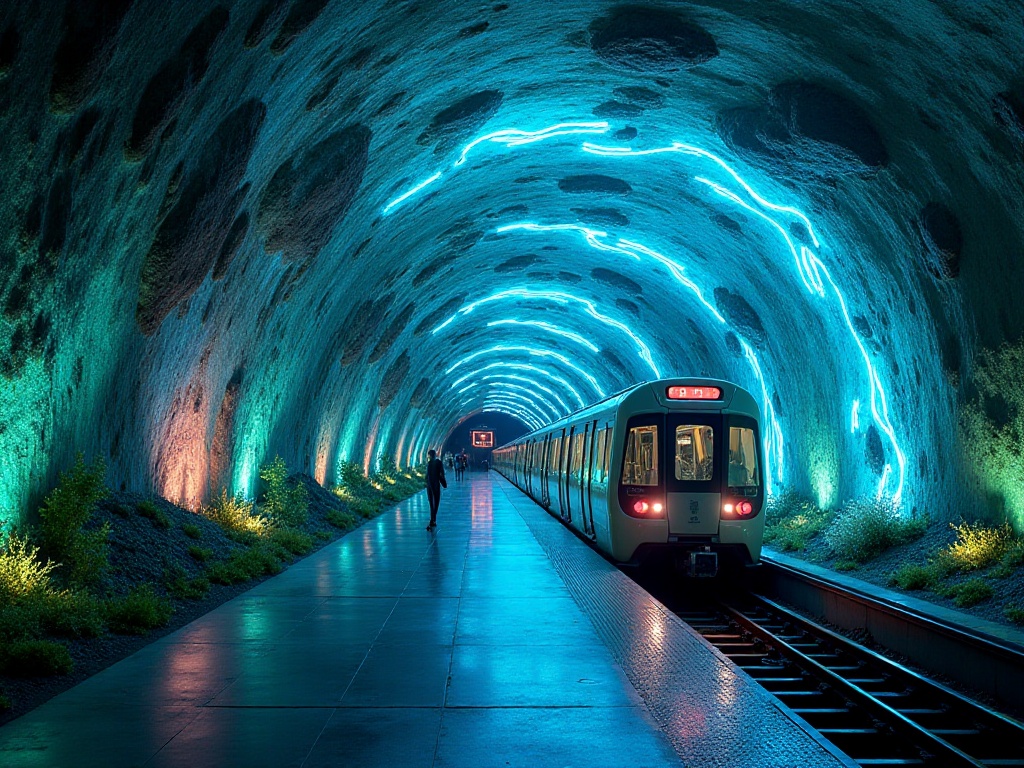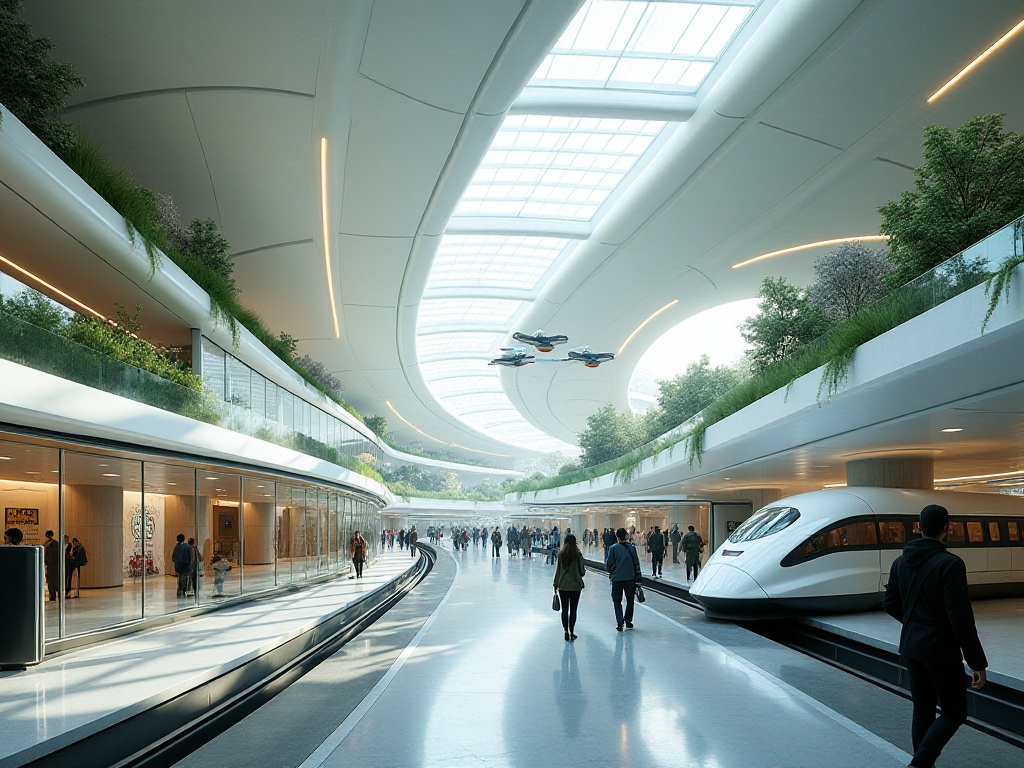It was my third day in Seattle, early spring, with a light drizzle falling. Pulling my suitcase, I boarded Seattle's light rail for the first time. The car wasn't crowded but was warm and comfortable. Sitting across from me was a kind elderly lady chatting with a young man wearing headphones.
Initially, I didn't pay attention to their conversation until the grandmother mentioned her granddaughter, which caught my ear. It turned out this grandmother took the light rail every Thursday to visit her granddaughter in the suburbs. More interestingly, she had made a group of "light rail friends" on this regular route. They were all regular Thursday passengers who, over time, became familiar with each other, forming a unique social circle.
The grandmother said there was a retired librarian on the light rail who often recommended children's books for her granddaughter, and a gardening enthusiast who taught her how to grow cherry tomatoes on her balcony. The Thursday light rail journey wasn't just transportation to see her granddaughter; it was more like a warm social gathering. Listening to the grandmother's vivid storytelling, I suddenly realized that public transportation is far more than just a means of getting around - it's like an invisible bridge connecting strangers.
Living in North America for a while, I've found that the bus system here is like a microcosm of society. Every morning, I take the Cityline commuter bus in West Hollywood. It's a completely free route, but the service quality is not compromised at all. The interior design of the bus shows thoughtfulness throughout: spacious aisles flanked by soft, comfortable seats, a designated wheelchair area in the front with an electric lift platform; there's even a bike rack on the front of the bus for cyclists to complete their last mile.
What surprised me most were the USB charging ports on the bus, something rarely seen in China. Once when my phone was about to die and I was anxiously waiting for an important call, I fortunately discovered the charging port next to my seat, which saved the day. The driver, seeing me flustered, even proactively showed me where the charging ports were - this kind of detailed service makes one feel especially cared for.
Speaking of heartwarming service, I must mention North America's unique Dial-A-Ride reservation-based transit service. This service primarily serves seniors and those with mobility difficulties. With just a phone call in advance, dedicated vehicles provide door-to-door service. The service personnel are professionally trained to not only help passengers board and alight but also patiently wait for slower elderly passengers and even help carry their belongings.
My neighbor, Aunt Helen, frequently uses this service. She has arthritis which makes it difficult to go out. Every Tuesday when she goes to the hospital for check-ups, she books through Dial-A-Ride. She says the drivers are especially thoughtful, knowing about her mobility issues, they always help her on and off the vehicle and even carry her shopping bags to her doorstep. This service has greatly improved the quality of life for seniors living alone.
In China, elderly people like Aunt Helen indeed face many difficulties with transportation. Buses board and alight quickly, and sometimes drivers, pressed for time, may lack patience waiting for elderly passengers. If services like Dial-A-Ride could be promoted, it would surely make travel more convenient and reassuring for the elderly.
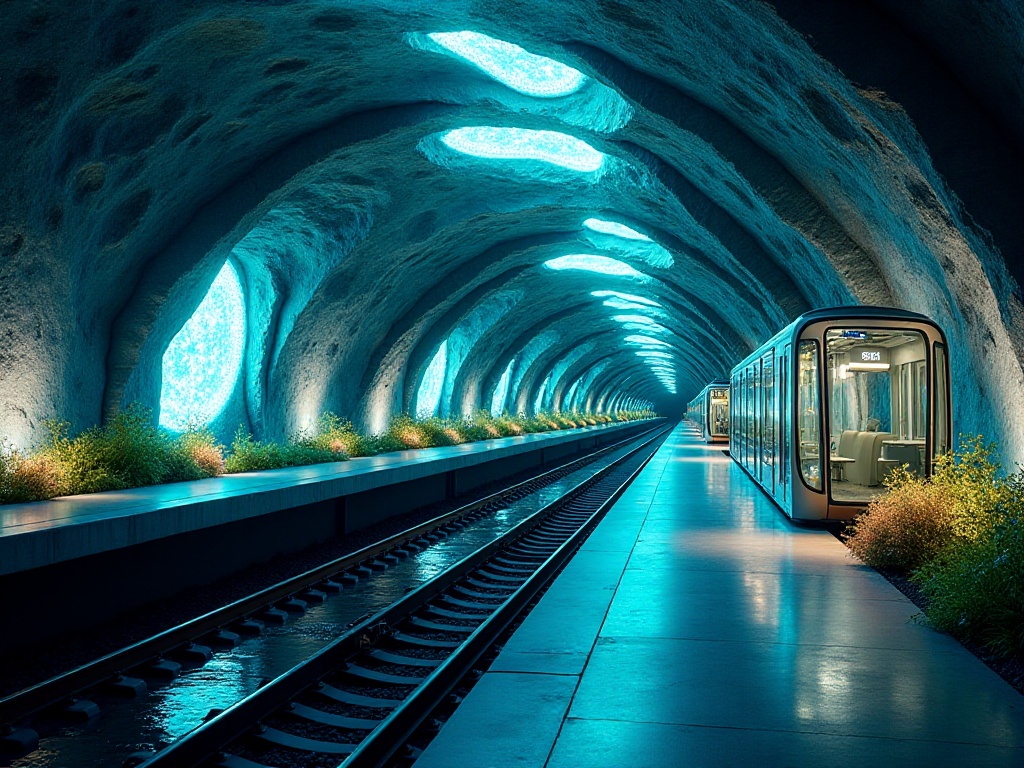
Speaking of North American subways and intercity trains, they're truly captivating. I'll never forget my first ride on Amtrak's Coast Starlight route. It was a sunny morning when I departed from Seattle, heading to San Francisco. This route is known as the "most beautiful railway line," and it certainly lives up to its name.
The train slowly started, traveling south along the Pacific coastline. Through the large observation windows, I saw morning light dancing on the rippling sea, seagulls skimming over waves in the distance, and rocky outcrops standing silently nearby. Breakfast in the dining car was also special - enjoying freshly cooked bacon and eggs while watching the Pacific sunrise was an experience impossible to replicate on any other mode of transportation.
The train carried all sorts of passengers: families on vacation with children, solo backpackers, and commuters like myself. The train staff were all friendly, often introducing points of interest along the way and even alerting passengers to upcoming scenic views. I remember when passing a coastal cliff, the attendant announced that seals often sunbathe there, and sure enough, we saw several seals lounging on the rocks.
The Bay Area's Caltrain gave me a completely different experience. This is primarily a commuter rail line connecting San Francisco and Silicon Valley. The double-decker design is ingenious, not only greatly increasing passenger capacity but also offering better views from the upper level. Morning Caltrains are like mobile offices, filled with the atmosphere of modern urban life.
Upper level seats are always the most popular for their expansive views and relative quiet. You often see casually dressed tech company employees typing away on laptops while sipping Starbucks coffee. Some wear noise-canceling headphones to handle emails, others quietly read on their Kindles, and some take the opportunity to catch up on sleep. Most interestingly, regular passengers on the same schedule gradually become acquainted, forming small groups to discuss work, life, and even organize weekend activities.
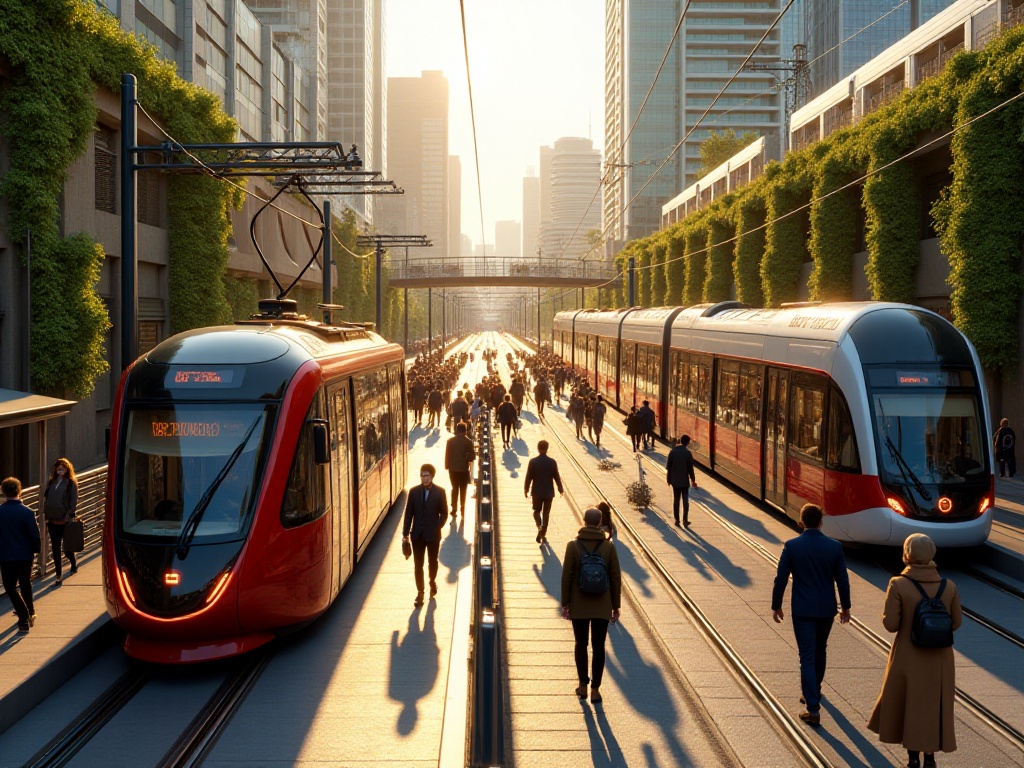
Among all public transportation modes, water transport might be the most poetic. During my time working in San Francisco, my greatest pleasure was commuting by ferry daily. The ferry isn't just an important transportation tool; it's also the perfect platform for enjoying San Francisco Bay's scenery.
I remember my first trip to Angel Island, deliberately choosing a sunny weekend. The ferry departed from Fisherman's Wharf, passing under the shadow of the Golden Gate Bridge, with Alcatraz Island's silhouette in the distance. Seagulls followed the ferry, swooping behind it, while gentle sea breezes carried a slight saltiness. Tourists on deck raised their cameras, eager to capture these precious views. I found a quiet corner to watch the city skyline fade in and out of the morning fog - a feeling too beautiful for words.
The ferry facilities are also very user-friendly. Inside, there are comfortable seats and a café serving simple beverages and snacks. The deck has a dedicated bicycle parking area for cycling enthusiasts. Every weekend, you can see many tourists with bikes who will cycle around Angel Island, enjoying the incomparable bay views.
What impressed me most were the ferry staff. They not only ensure safe passage but also act as tour guides. Whenever passing famous landmarks, they would introduce their history and interesting facts over the PA system. Once, when we encountered a pod of dolphins, the captain immediately slowed down to give passengers ample time to enjoy this rare natural display.
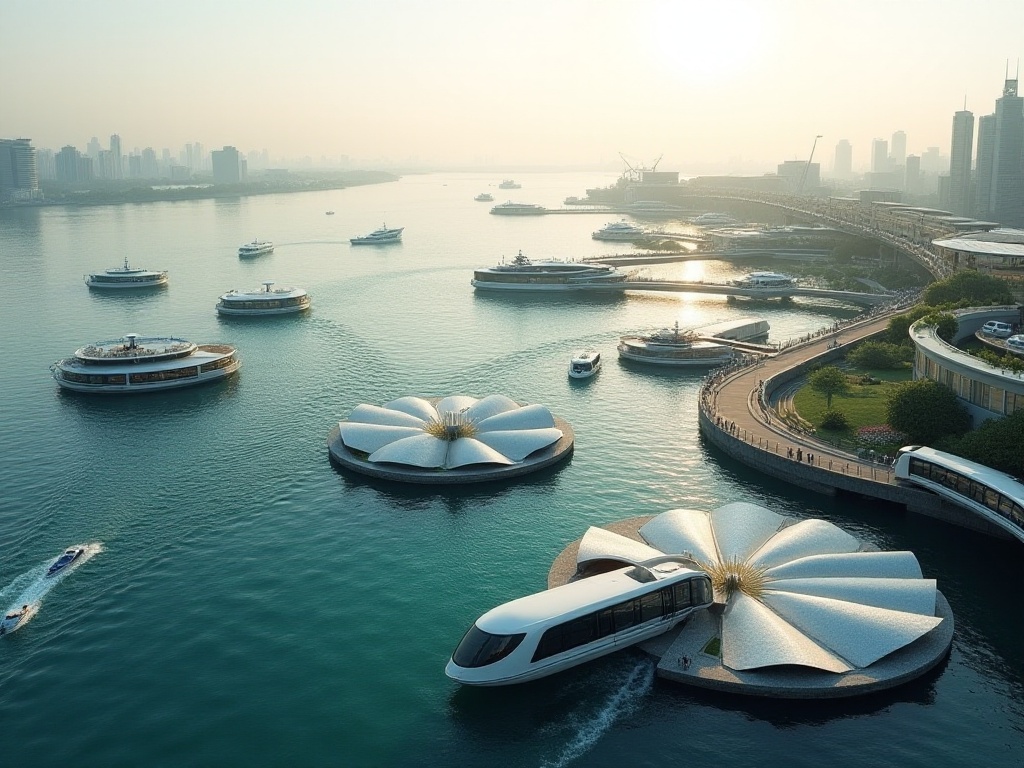
The efficient operation of North American public transportation systems actually conceals many intricacies. First and most crucial is the concept of seamless integration. Taking San Francisco as an example, the entire Bay Area's public transportation system is like an intricately woven network. BART (Bay Area Rapid Transit) connects major cities, Muni (Municipal Transportation) covers city details, and ferries link both sides of the bay. These different modes of transportation achieve perfect coordination.
The schedule design is also ingeniously crafted. For instance, at major transfer stations, subway arrival times are offset by a few minutes from connecting bus departures, leaving passengers adequate transfer time. The ticketing system is also integrated - one Clipper card works across all public transportation in the Bay Area, truly achieving "one card for all travel."
The improvement in smart technology has enhanced the passenger experience even further. Now almost all transit vehicles can be tracked in real-time through mobile apps for location and arrival times. Some apps serve as travel assistants, not only recommending optimal routes but also automatically adjusting suggestions based on real-time traffic conditions.
I fully experienced this convenience during a suburban trip in Seattle. That day, wanting to visit a remote beach, I planned my route through an app and found I could take light rail to the dock, then a ferry across the water, and finally a local bus to my destination. The app not only listed detailed schedules but also marked specific locations and walking routes for each transfer point. Even more thoughtfully, when the light rail was delayed, the app immediately sent notifications and recommended alternatives.
Humanized service is the finishing touch of the entire system. From accessibility facilities to multilingual services, from night safety buses to senior-specific services, every detail reflects care for different groups. For example, the night safety bus service allows passengers to alight at any point along fixed routes, not just at stations, which is especially meaningful for women returning home at night.
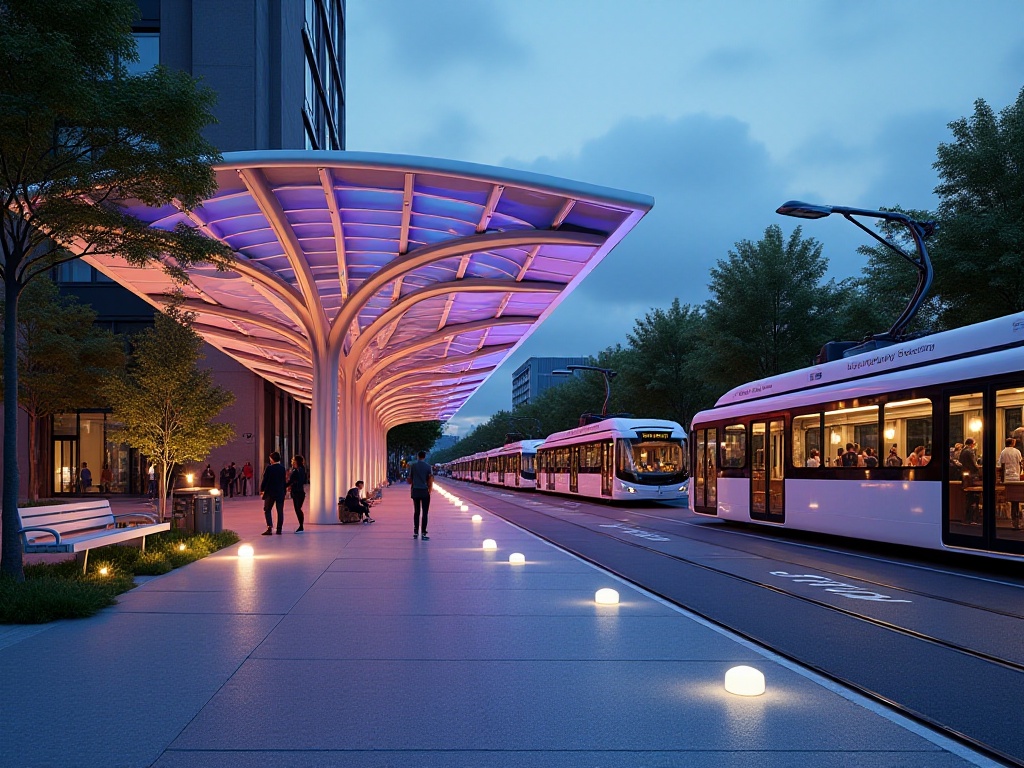
Whenever I ride these public transportation vehicles, I can't help but imagine the future of urban transit. Perhaps in the near future, we'll see more self-driving buses navigating streets, adjusting routes in real-time and optimizing paths based on passenger needs. Hydrogen-powered trains might replace traditional diesel locomotives, offering not only more environmental friendliness but also a more comfortable riding experience.
Sky buses might no longer be just science fiction scenes but real transportation options. Imagine a fleet of electric aircraft orderly transporting passengers above congested cities - that scene would be quite spectacular. Of course, the application of these new technologies must be based on safety and reliability.
But regardless of how future transportation evolves, one thing remains eternal: a good public transportation system must pursue not only efficiency but also maintain human care. Just like the grandmother I met on Seattle's light rail, her story taught me that transportation isn't just about connecting two points, but about connecting people emotionally.
In our fast-paced modern life, public transportation has become an indispensable part of our existence. It witnesses our commutes, travels, dates, farewells, carrying countless stories and memories. Each journey is a unique experience, and every encounter could become an unforgettable memory.
This is the charm of North American public transportation: it not only takes you to your destination but makes the journey itself enjoyable. Next time you take public transportation, try slowing down and sensing the people and things around you - you might encounter your own heartwarming story.
What's your favorite mode of public transportation? Feel free to share your story in the comments. Next time, we'll talk about North America's special sightseeing routes - don't forget to follow.
 Previous
Previous

